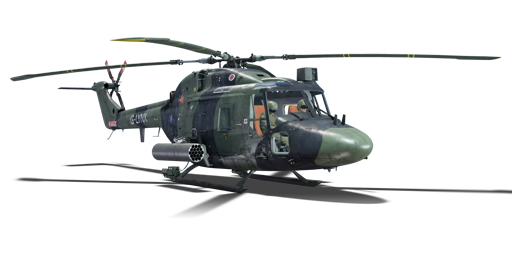



Following initial orders, Westland retained one unit of the Lynx as a demonstrator and trial aircraft, which was given the civil registration G-LYNX. Built in 1978, it was taken on a range of demonstration tours across Europe and the Middle East, hoping to drive export sales. The helicopter was also used to test various equipment. Most notably, in mid-1986, G-LYNX underwent a short but extensive modification programme, including the installation of uprated Rolls-Royce Gem 60 engines and new British Experimental Rotor Programme (BERP) blades, significantly increasing its lift and power delivery. On 11 August 1986, G-LYNX, flown by Westland chief test pilot Trevor Eggington, sustained a speed of 400.87 km/h over the Somerset Levels, an FAI world speed record which it still holds to this day. Following its record-breaking flight, G-LYNX continued its role in demonstration and equipment trials until it was finally retired in 1992. In 1994, Westland agreed to entrust G-LYNX to The Helicopter Museum in Weston-super-Mare, UK, and in 2007 began restoration of G-LYNX to its record-breaking configuration using original and replacement components sourced by The Helicopter Museum. The restored G-LYNX was finally unveiled in 2011 and is now exhibited in the museum as a permanent display.
It was introduced as a premium pack in Update 1.91 "Night Vision". It was removed from the store after the 8th Anniversary Sale, and was reintroduced in Update "Hot Tracks" as a Golden Eagle purchasable vehicle. The G-LYNX is a very capable helicopter for its BR, featuring good flight performance, decent optics, and very capable armament. The engines on the G-LYNX are nothing special, however, it's very agile, being able to pull very tight turns that other helicopters simply can't do. The armament is great, with access to AGM-114 Hellfire ATGMs that prove very lethal. However the survivability is very poor, and also, even though it has access to thermals, the zoom on the optics is very mediocre: acquiring targets at long distance may be challenging.
| Name | Weight | Slot | ||||
|---|---|---|---|---|---|---|
| 19 × | 231.6 kg |  |  | |||
| 4 × | 198.5 kg |  |  | |||
| 4 × | 85.8 kg |  |  | |||
| 108.2 kg |  | |||||
| 2 × | 20.2 kg |  |  | |||







 2 x (50 / 255 / 385) %
2 x (50 / 255 / 385) % 
 2 x 214 %
2 x 214 % 

Flight performance |
|---|
Survivability |
|---|
Weaponry | ||
|---|---|---|